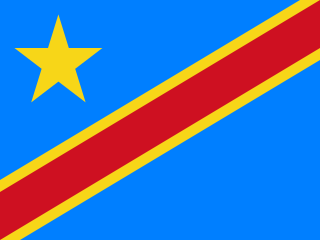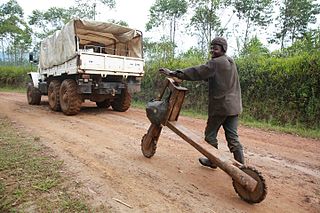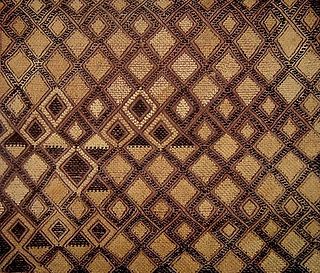 W
WThe culture of the Democratic Republic of the Congo is extremely diverse, reflecting the great diversity and different customs which exist in the country. Congolese culture combines the influence of tradition to the region, but also combines influences from abroad which arrived during the era of colonization and has continued to have a strong influence, without destroying the individuality of many tribal' customs.
 W
WThe chukudu is a two-wheeled handmade vehicle used in the east of the Democratic Republic of Congo. It is made of wood, and is used for transporting cargo.
 W
WA Katanga Cross, also called a handa, is a cast copper ingot in the shape of an equal-armed cross which was once used as a form of currency in parts of what is now the Democratic Republic of the Congo (DRC) in the 19th and early 20th centuries. Katanga crosses were made in various sizes, typically about 20 centimetres (7.9 in) across, and weighing about 1 kilogram (2.2 lb). The name derives from Katanga, a rich copper mining region in the south-eastern portion of the DRC.
 W
WKisolo is a traditional mancala game played by the Luba, Lulua and Songye peoples of DR Congo and Zimbabwe. It is closely related to other East African mancalas such as Bao, Bao Kiarabu, Coro and Isolo.
 W
WKuba textiles are unique in the Democratic Republic of the Congo, formerly Zaire, for their elaboration and complexity of design and surface decoration. Most textiles are a variation on rectangular or square pieces of woven palm leaf fiber enhanced by geometric designs executed in linear embroidery and other stitches, which are cut to form pile surfaces resembling velvet. Women are responsible for transforming raffia cloth into various forms of textiles, including ceremonial skirts, ‘velvet’ tribute cloths, headdresses and basketry.
 W
WLotoko, also known by the slang term "pétrole", is a home-distilled alcoholic drink or "moonshine" in the Democratic Republic of the Congo.
 W
WThe Mangbetu is African tribe part of Democratic Republic of the Congo, living in the Orientale Province. The people of this tribe produced a large variety of highly developed art and music, such as harps, guitars, pots, and other crafts. Their pots are still prominent in today's art spectrum, and ones that have been constructed in the early days of the tribe are sold to collectors and people alike for high prices.
 W
WThe Nzappa zap is a traditional weapon from the Congo similar to an axe or hatchet.
 W
WQueen mothers are leaders and women of power in Africa. There is no general description of a queen mother. Generally, queen mothers play an important role in local government and "wield social power and influence." The amount of power they currently hold has been diminished since pre-colonial times.
 W
WVelours du Kasaï is a kind of textile fabric made in Kasai, a province in the Democratic Republic of the Congo (Zaïre). Traditionally, the weaving is done by men of the Shoowa from the Kuba ethnic group, while the embroidery is reserved to women. Ideally, the embroiderers should be pregnant. The technique is still practised.